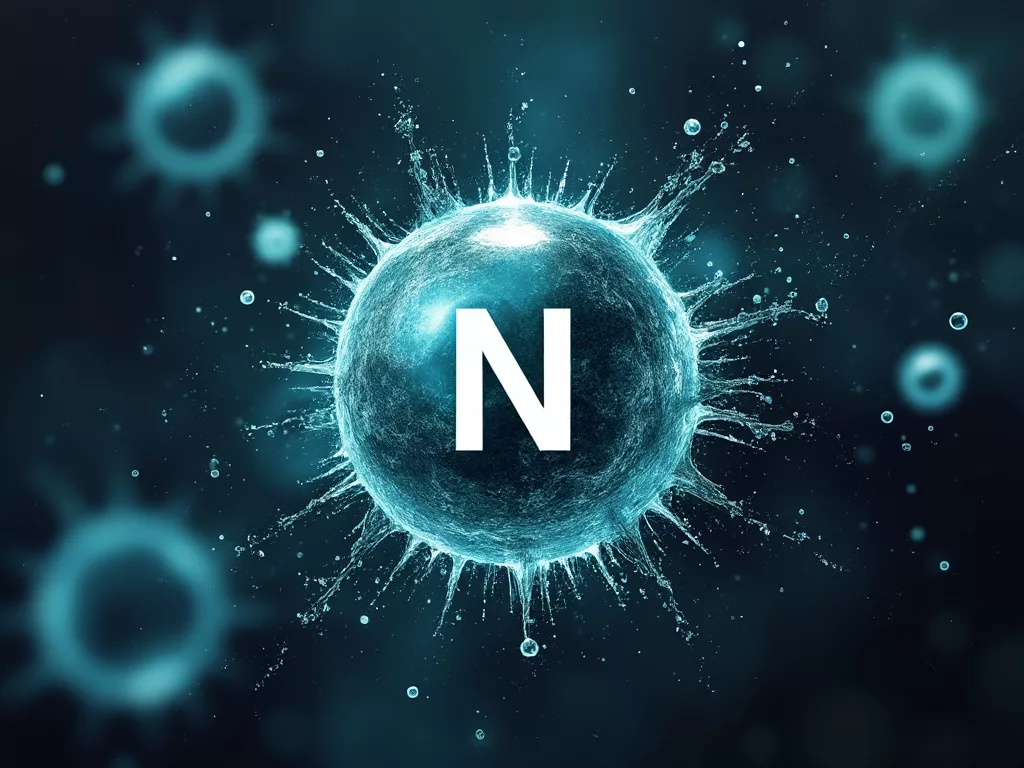Nitrogen, with its chemical symbol N, is one of the most essential elements for life as we know it. It’s the seventh element on the periodic table, has an atomic number of 7, and an atomic mass of approximately 14.01. While it makes up about 78% of Earth’s atmosphere, Nitrogen plays an important role beyond just being a part of the air we breathe.
Table of Contents
The Basics of Nitrogen
Nitrogen is a colorless, odorless, tasteless gas that is relatively inert, meaning it doesn’t readily react with other elements. This non-reactivity makes it a perfect component for the atmosphere, helping to protect life from the more reactive oxygen.
- Atomic Number: 7
- Symbol: N
- Atomic Mass: 14.01 u
- State at Room Temperature: Gas
Nitrogen in Nature
Nitrogen’s story begins with its discovery in the late 18th century by Scottish Physician Daniel Rutherford, who was studying the residue left when burning substances in air. This gas, which he termed ‘noxious air’, was later identified as Nitrogen.
In nature, nitrogen exists in various forms:
- Nitrogen Gas (N₂): The most abundant form, where two nitrogen atoms are bonded together.
- Nitrates and Nitrites: Found in soil and water, these are vital for plant nutrition.
- Ammonia (NH₃): Crucial in fertilizer production and biological processes.
The Nitrogen cycle is where nitrogen moves through different forms in the environment. Nitrogen-fixing bacteria in soil convert atmospheric nitrogen into ammonia, which then transforms into nitrates. Plants absorb these nitrates, animals eat the plants, and when they decompose or excrete waste, nitrogen compounds return to the soil or atmosphere, continuing the cycle.
See also: Radioactive Radium Metal
Industrial Uses of Nitrogen
The Haber-Bosch process, developed in the early 20th century, revolutionized agriculture by synthesizing ammonia from nitrogen and hydrogen, significantly boosting food production by enhancing soil fertility. Nitrogen is also used in:
- Food Preservation: Liquid nitrogen is used to freeze and preserve food, extending shelf life.
- Electronics: Liquid nitrogen cools materials to low temperatures in cryogenics for high-tech applications.
- Chemicals: Nitrogen compounds are integral in explosives, dyes, and fertilizers.
Biological Importance of Nitrogen
Nitrogen is a key component of amino acids, the building blocks of proteins, which are essential for all life forms. It’s also found in DNA, where it helps in the genetic blueprint of organisms.
- Protein Synthesis: Without nitrogen, life as we know it wouldn’t exist. Every protein in every cell contains nitrogen.
- Nucleic Acids: Nitrogen is crucial in the formation of DNA and RNA, which carry genetic information.
Environmental Impact of Nitrogen
While nitrogen is vital, its overuse, particularly in agriculture, leads to environmental issues like:
- Eutrophication: Excessive nitrogen in waterways causes algae blooms, which deplete oxygen levels, harming aquatic life.
- Nitrous Oxide: A potent greenhouse gas, contributing to climate change when released from fertilizers or combustion processes.
Conclusion
Nitrogen is an element that supports life yet requires careful management to prevent environmental harm. From the air we breathe to the food we eat, Nitrogen’s role is both fundamental and everywhere. Understanding and managing this element is crucial for sustainable living, making nitrogen not just a subject for scientific study but a critical component in our daily lives and environmental policies.






















